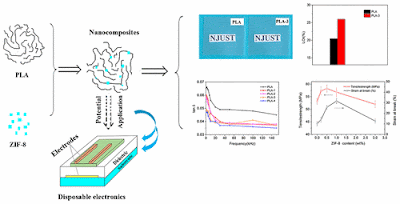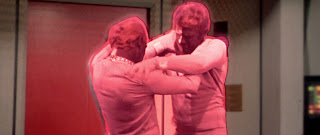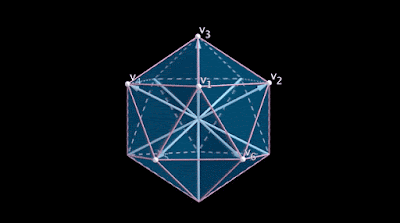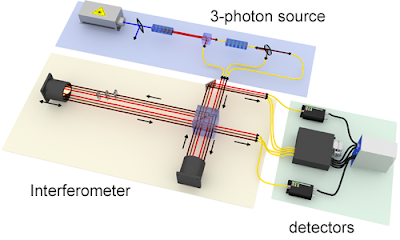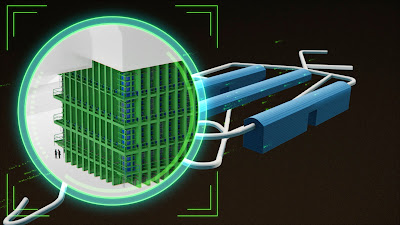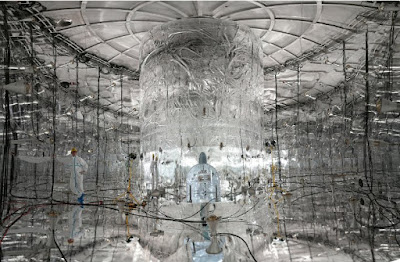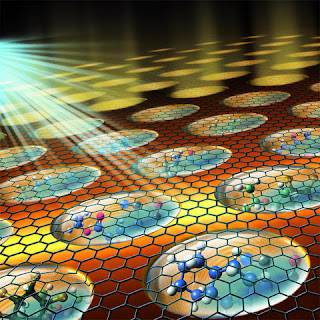Topics: Commentary, Climate Change, Existentialism, Politics
As Michael Lewis has written, “It’s more than a little nuts for a man who has a billion dollars to devote his life to making another billion, but that’s what some of our most exalted citizens do, over and over again.”
Greed begins in the neurochemistry of the brain. What fuels our greed is a hormone neurotransmitter in the brain called dopamine. The higher the dopamine levels in the brain, the more pleasure we experience. Cocaine, for example, directly increases dopamine levels.
By using magnetic resonance imaging studies, the Harvard researcher Hans Breiter and his colleagues have found that the craving for money activates the same regions of the brain as the craving for cocaine, or sex, or any other instant and intense pleasure.
After reading Robert Kiyosaki's "Rich Dad, Poor Dad," the one line that stuck with me after finishing the book was from his 'rich dad': This idea probably started when humankind went from a simple barter system - I'll give you this, if you give me that. It evolved into representing wealth by precious minerals that seemed to occupy one or many mountains; a particular swath of land. Perhaps that is where the designation of sacred grounds (set apart) came about. Thus Asgard, Heaven, Olympus, Nirvana, Valhalla - paved with precious stones, streets of gold and anatomically perfect beings who live forever. This would be quickly approximated by royalty and the wealthy with gourmet chefs, excellent healthcare and massage therapists.
Economies were begun on this "idea," and the idea fueled the quest for more stuff, be it rubles, rubies; silver, gold, platinum; women or slaves.
Wars have been fought over this "idea," as instead of "I'll give you this, if you give me that" an inventory of sorts takes place and the statement becomes:
THEY have that (gold, silver, platinum, etc.) and we want it.
WE have more stones/arrows/catapults/mortars/guns/bombs - so, let's take it!
It's simplistic, but essentially the goal of colonizers and conquest. The only thing that changes is whether it's in the name of a deity, a particular form of government or the expansion of empire, i.e. the motivating factor to sell the population that will be fighting the wars to get the booty, bounty, cheddar; precious stuff.
You also have to give some detestable attributes to those designated as "they" or "them": black, brown, evil, mud people, red, reprobate, soul-less, terrorist, violent, ugly, yellow.
You MUST have ascribed to yourselves noble attributes akin to the gods: beauty, good, pious, pure, snow, white: your women as property are "flowers of womanhood" and any violation of her pedestal - real, or falsely perceived - met with violent retribution.
The political economist Benjamin Friedman once compared modern Western society to a stable bicycle whose wheels are kept spinning by economic growth. Should that forward-propelling motion slow or cease, the pillars that define our society – democracy, individual liberties, social tolerance and more – would begin to teeter. Our world would become an increasingly ugly place, one defined by a scramble over limited resources and a rejection of anyone outside of our immediate group. Should we find no way to get the wheels back in motion, we’d eventually face total societal collapse.
Safa Motesharrei, a systems scientist at the University of Maryland, uses computer models to gain a deeper understanding of the mechanisms that can lead to local or global sustainability or collapse. According to findings that Motesharrei and his colleagues published in 2014, there are two factors that matter: ecological strain and economic stratification. The ecological category is the more widely understood and recognised path to potential doom, especially in terms of depletion of natural resources such as groundwater, soil, fisheries and forests – all of which could be worsened by climate change.
The ecological strains are myriad: air pollution, acid rain, climate change, dumping toxins in potable water (see Flint, Michigan). We're permanently in a Caste System that requires "Brahmins (priestly people), the Kshatriyas (also called Rajanyas, who were rulers, administrators and warriors), the Vaishyas (artisans, merchants, tradesmen and farmers), and Shudras (labouring classes)." Lastly the pariahs or "untouchables" provide the base for the hierarchal system, and apparently the untouchables are there for all time: they must know and never get out of their place. (emphasis mine). Source: Wikipedia. Such rebellion by the untouchables is usually met with violent repression, and no one in the top tiers of the Caste System are interested in things like equality or hierarchy mobility. This sandbox has the measurable dimensions of density, mass, volume elevation and depression (valleys, canyons). It has an advanced age that has allowed five previous extinctions. A lot of the yellow trucks, machines and devices on it are like the trucks in the stock photo showing their wear. Living beings before humans have breathed and passed on in this sandbox's long history. The strain and the stratification is over this "idea" that is being hoarded by the obnoxious kids in this sandbox. We've all seen them at the beach. Their mothers (and quite a few of their fathers) in particular are enablers to what amounts to the keen behaviors of a sociopath. Their castles must be "the biggest and the best"; the shiny shells found on the seashore the currency of their "kingdoms." They must have MORE. Their narcissism is far beyond Maslow's five basic needs, on steroids - or an elicit drug. The builders of smaller sandcastles are seen as weak, puny, ugly, evil: other. The narcissists cloister around one another building moats, draw bridges, catapults and exclusive sandcastle enclaves, only for the "best" kids. Their bullying is excused, explained and defended by their enablers. Eventually, the snot-nosed sociopaths move on due to boredom, a new shiny toy or goes home near twilight and bedtime. Inevitably as will happen with the passage of time, ocean waves roll in with the rising tide, and Entropy washes the king's sandcastles and bauble away... making both extinct.
Perfection itself is imperfection.
Vladimir Horowitz
Related link
The Crisis of Western Civ, David Brooks, The New York Times





